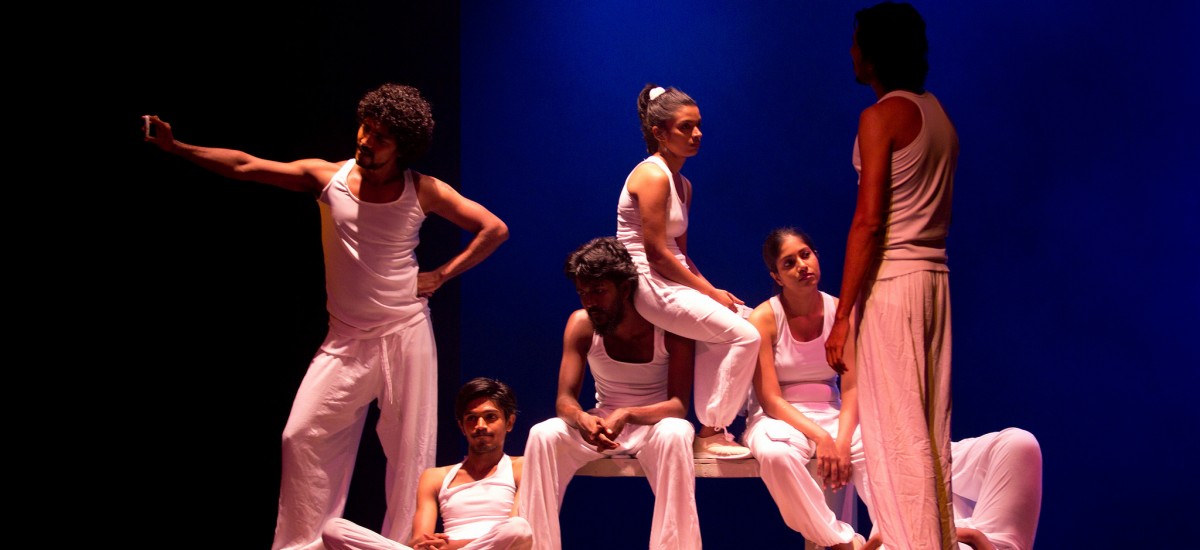Photo courtesy Stages Theatre Group
It is a ‘must see’ play which is a bold and insightful critique on the rapidly changing landscape of Colombo. It describes the good, the bad, the ugly and the beautiful that is taking place as a consequence.
The play creates a youthful atmosphere with plenty of comedy and entertaining rhythmic aerobics performed to lively music. However, it also carries a more somber message about Colombo’s beautification drive subtly entwined in the fun and games encountered in the new recreational spaces of Colombo.
The simple youth display initial amazement and curiosity as to the purpose of the beautifully paved new walking paths. One can infer that their ignorance is on account of their exclusion from participating in the beautification process. On the other hand, the elites appear to be familiar with the designated paths for recreation and exercise. They influence others in imitating their fashion trends of conspicuous and comic smart phone usage and frivolous sports such as toy car racing. It appears to foster an air of pretention accompanied by social detachment and indifference.
Despite the scenic, clean and safe environment of paths, the play brings out a tense feeling among users of being watched and regulated. It seems that the recreational space does not offer a sense of freedom and public ownership which is essential for enjoyment.
Lovers are restrained from public expression of affection and gay couples are frowned upon, intimidated and even harassed by those in control. Unfortunately, it contradicts the growing social trend, particularly among youth, towards liberal attitudes and tolerance which are the hall marks of a progressive culture. Despite the tension, youth find interesting and amusing ways of beating the system.
The play brings out the deeper implication of a dangerous trend towards covert social control by the state which could burst into social upheaval. Landscape changes have suddenly impacted on the rights of residents in terms of property ownership, household space, livelihoods and lifestyles. It can have serious long term repercussions if left unaddressed as it can cause a feeling of injustice, inequity and social exclusion, particularly, amongst the underprivileged majority.
The lion is a symbol of power as well as Sinhala racial identity. Lions are highlighted in the play through the sculptures set in proximity to walking paths which comically emanate growls when persons do not obey the rules of ‘acceptable ‘conduct.
In a broader sense, are we, as citizens, permitting ourselves to be controlled and intimidated by the state in the name of modernization? Should we not demand for inclusive, transparent and democratic decision making in planning our future?
That is the question that arise in one’s my mind at the end of the play. I congratulate the producers on a fine production relevant to our times.
Besides the profound message uniquely conveyed without the uttering of a single word throughout the drama, it was entertaining, humorous and well acted by a talented cast. It is worthy of mention that the music, lighting, sets and stage effects although simple, were effective in providing the right atmosphere and balance to the tragi-comic theme.

